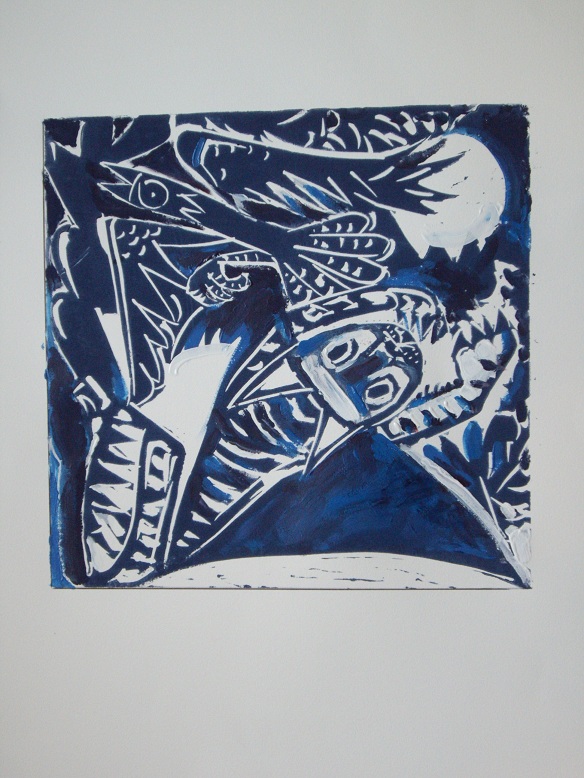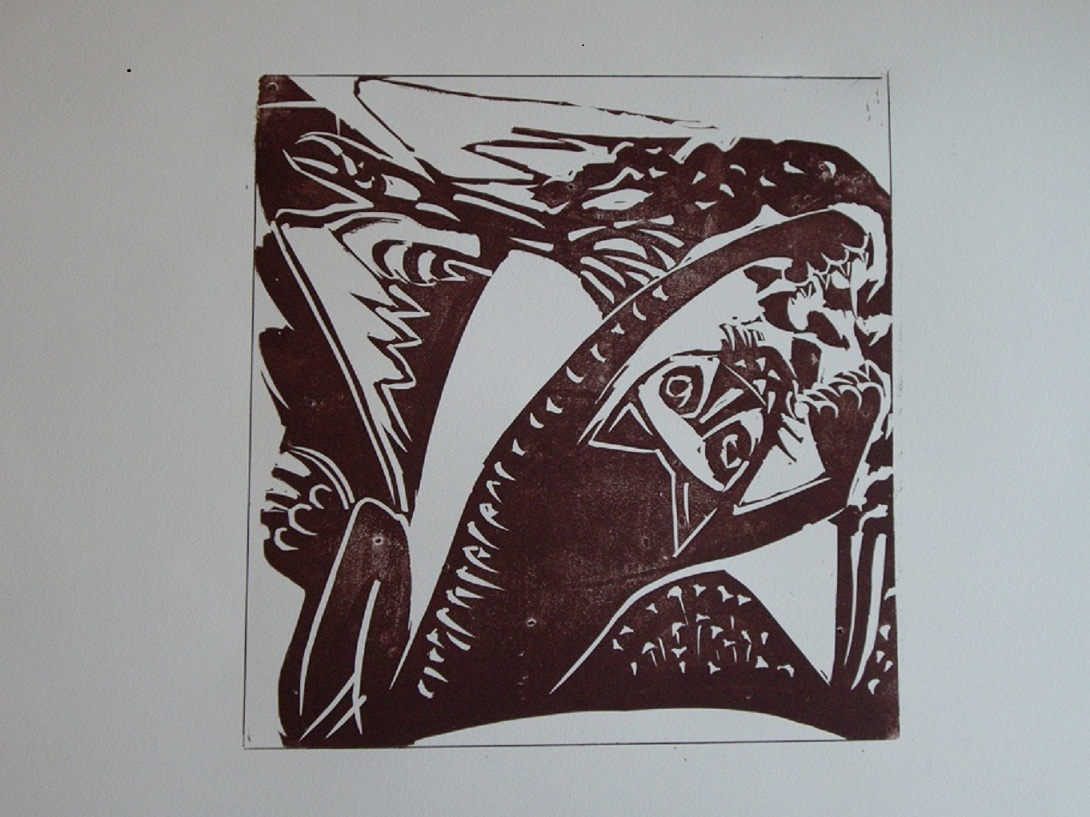Many young people here have the fine quality of being artists but they have not understood the specific language of art, and so the great masterpieces in the world are forever denied them, even though partial understanding in those work may still be enjoyment… . For that reason, the Alpha Seer decides to bring on the proper understanding through comparing his two recent work here. Learning through comparison is the surest thing to do! Do not listen to, or believe in any of those academic theories or sentimental narratives, as art has absolutely nothing to do with such silliness.
718 in Figure 2 is the complete composition. 715 in Figure 1 can only be called incomplete. 715 is nothing more than a sketchy piece of work at best, with which the artist probes his best approach in his attempt for completion. Of the countless number of compositions in the world, only the complete ones may be called true masterpieces,– perfect as well as timeless, harmonious compositions that do not fail to soothe the soul! After all, that is the name of this game we call art,– and its content as well.
Inside every major museum in this country, there may be a hundred thousand incomplete work but there are only a handful of complete, or perfect compositions. I am just being polite here when I say so. At earlier times, I have called those work mediocre, and their authors, by the unflattering names of  “impostors.”  There is nothing wrong to call things or peoples by their correct names,–for the sake of clarity,  but that has offended a lot of people. So overtime the Alpha Seer has become more diplomatic, and politely call them incomplete jobs. Sometime he simply keeps his mouth shut in most situations. The great master Knox Martin’s work are the most reliable in any given period of time because every composition by him is a masterpiece! That is the Alpha Seer’s understanding,–and to the best of knowledge. There are only a handful of such high profile super-creators in the history of art. To name just a few in the paintings of the West, they are Van Eycke, Titian, Adrienne Brouwver, Franz Hals,  Cezanne, Rembrandt, Velazquez, Zurbaran, Claude Lorraine, Matisse and Picasso. They are the best super-creators to study from if you are really serious about understanding art.
In the 718 version below, the black and the white entwine each other thoroughly, and each of their respective parts, once allowed to re-group,–i.e. to be taken in at one glance, form a single complete entity. Nothing should be left dangling in a perfect composition. In 715, the intertwining of the black and white has failed to create harmony, so one can detect two major white bubbles, one on the lower left and the other, a round one, on the upper right. Those bubbles are eye-sores in the composition.They do not stand up to the scrutiny of good calligraphy,–hence good taste is impossible. For that reason, 715 cannot be called a complete composition.
Now are you prepared to argue that understanding art cannot be so utterly simple? Yet believe me,– even with the mind  well-equipped with such fabulous criteria, people are still uncertain, very much so, as to what to look for in a complete composition. In that sense, I am not sure if art is such an easy nut to crack anymore! That is why I have often maintained that art is the playing field of the artistic geniuses.
**********************************************************************************************************
FIGURE 2: AFRICA SERIES 718
**************************************************************************************
|
Jun 10
 |
  |
||
|
||||
WOWÂ Â Â Â Â Â Â Â !!!!!!!!!!!!!!
That was the great master Knox Martin’s commenting on 718 (Figure 2)
***************************************************************************************
In addition to the deficiency in calligraphic excellence in the 715 composition, there is something dangling by one of the wings of the bird on the upper right. Anytime something is left dangling in a composition, the entire field of interaction becomes very unsettling. Nothing unsettling should be detected in a perfect composition. Take a Mozart composition, or a Beethoven one, for example,–you cannot detect any unsettling thing anywhere,–their music is perfect and timeless.
The strong arm of the beast in 718 has corrected that embarrassing mistake.That same arm follows the curvature of a circle. There are other great circles everywhere if you are attentive. Why circle? Circles offer the strongest curvatures. Good calligraphy is made up of strong curves and uncompromising straights.

